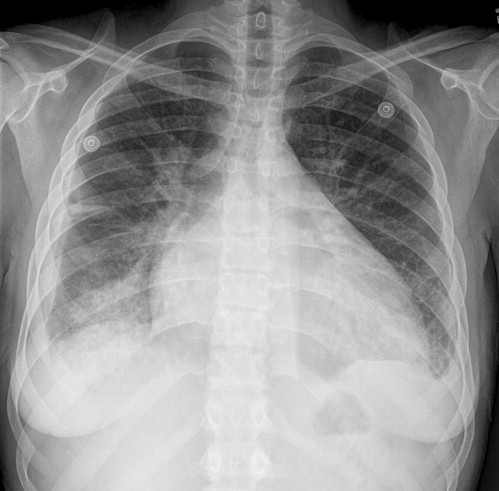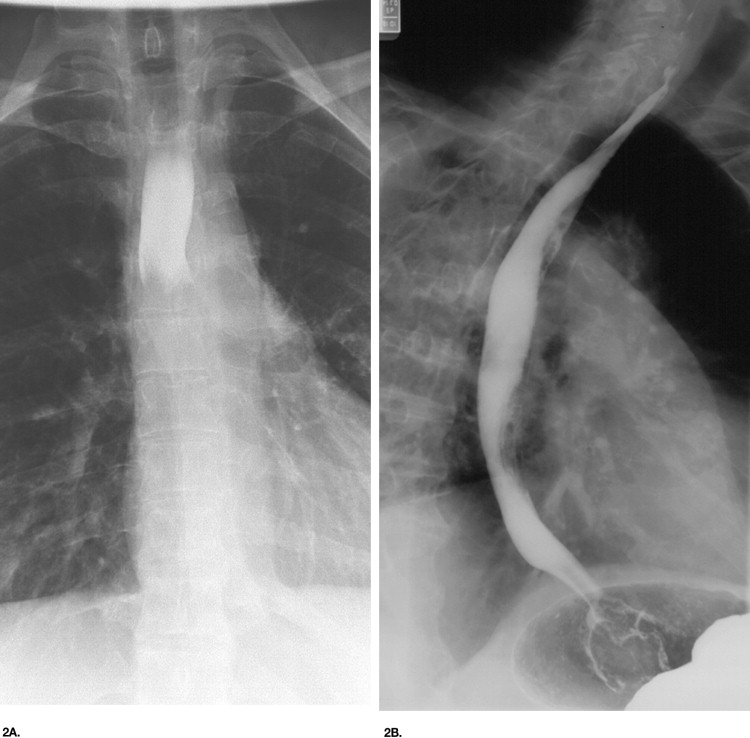Rationale and Objectives
The authors performed this study to develop, implement, and evaluate a dedicated core clerkship in radiology for the required clinical clerkship year of medical school, and to compare it with the distributed core clerkship that it replaced.
Materials and Methods
A dedicated 5-day clerkship was added to the clinical core year of medical school. The course offered a variety of learning experiences, including lectures, clinical observation, case discussions, and a team project. Learner achievement was measured by posttest and compared with a control group. Student satisfaction was determined by structured and unstructured surveys. Faculty comment was elicited by survey, and administrative staff perspective was established through interviews. The evaluation of the dedicated clerkship was compared with the distributed clerkship along the dimensions of learner achievement, student satisfaction, faculty comment, and administrative staff perspective.
Results
The dedicated clerkship was developed and implemented successfully. Compared with the distributed clerkship, there was no significant difference in learner achievement or student satisfaction for the dedicated clerkship, but the dedicated clerkship was easier to conduct for faculty and administrative staff.
Conclusion
The dedicated clerkship was advantageous for faculty and administrative staff, whereas maintaining a comparable level of learner achievement and student satisfaction as the distributed clerkship.
In 1998, our medical school implemented a new undergraduate curriculum that stressed problem-based learning and computer delivery of instructional materials. To this end, all medical students were provided with laptop computers and technical support, and the local area network was expanded to cover the entire medical center. This created the opportunity to augment instruction in diagnostic radiology during various portions of the curriculum by incorporating computer aided instruction (CAI) radiology modules, however radiology was not originally included among the core clinical rotations. After a process of negotiation with the curriculum committee and the core clerkship directors, a required radiology clerkship was accepted into the core clinical year as a series of 10 independent half-day teaching sessions distributed throughout the year, and partially integrated with existing clerkships.
Web-based curriculum materials, in-class lectures, and tutorials were developed for the radiology clerkship. Subsequently, it was demonstrated that a Web-supported radiology curriculum distributed over a required clinical clerkship year was feasible, but several disadvantages were observed ( ). The disadvantages included discontinuity in episodes of teaching, conflicts with patient care responsibilities in other rotations that prevented students from attending all lectures and tests, and complex administration and scheduling. It had been hoped that the clinical rotations into which the radiology sessions were integrated would complement one another. Unavoidably, nevertheless, schedules were often in conflict and at times the radiologic topics did not correlate well with the clinical clerkships. The success of the distributed core clerkship, in spite of its disadvantages, ultimately led the medical school to consolidate it as a 5-day dedicated clerkship within the required clinical core year.
Get Radiology Tree app to read full this article<
Get Radiology Tree app to read full this article<
Materials and methods
Development and Implementation
Get Radiology Tree app to read full this article<
Table 1
Sample Student Schedule for Dedicated Radiology Clerkship
Time Day 1 Day 2 Day 3 Day 4 Day 5 7:30–8:15 Resident lecture Resident lecture Resident lecture Resident lecture Resident lecture 8:30–9:00 Morning activity Orientation Quiz 1: bone Quiz 2: chest Quiz 3: pediatrics Team project 9:00–10:30 Lecture block
10:30–12:00 Observation block Clinical area Clinical area Clinical area Clinical area Clinical area 12:00–1:30 Midday block Resident conference 12:30–1:15 Resident conference 12:30–1:15 Resident conference 12:30–1:15 Resident conference 12:30–1:15 Resident conference 12:30–1:15 1:30–3:00 Tutorial block Arthritis tutorial Chest radiology tutorial Osteoporosis tutorial Imaging for screening Final exam 3:15–4:45 Case discussion block Case discussion: fractures Case discussion: chest Case discussion: pediatrics Case discussion: neuroradiology Final exam
Get Radiology Tree app to read full this article<
Get Radiology Tree app to read full this article<
Get Radiology Tree app to read full this article<
Get Radiology Tree app to read full this article<
Get Radiology Tree app to read full this article<
Table 2
Clinical Observation Areas, Activities, and Educational Objectives
Area and Capacity Activities and Educational Objectives
CT: computed tomography.
Get Radiology Tree app to read full this article<
Get Radiology Tree app to read full this article<
Get Radiology Tree app to read full this article<
Get Radiology Tree app to read full this article<
Get Radiology Tree app to read full this article<
Evaluation
Get Radiology Tree app to read full this article<
Attendance
Get Radiology Tree app to read full this article<
Learner Achievement
Get Radiology Tree app to read full this article<
Get Radiology Tree app to read full this article<
Student Satisfaction
Get Radiology Tree app to read full this article<
Get Radiology Tree app to read full this article<
Faculty Survey
Get Radiology Tree app to read full this article<
Comparison with Distributed Clerkship
Get Radiology Tree app to read full this article<
Results
Evaluation
Attendance
Get Radiology Tree app to read full this article<
Learner achievement
Get Radiology Tree app to read full this article<
Student satisfaction
Get Radiology Tree app to read full this article<
Table 3
Results of Structured Evaluation of the Dedicated Clerkship
Best Worst_n_ ⁎ Mean 1 2 3 4 5 Quiz and answer sessions Overall educational value 61 36 6 1 0 104 1.49 Fairness 69 30 4 1 0 104 1.39 Lectures and tutorials Overall educational value 47 50 6 0 0 103 1.60 Quality of presentations 39 49 13 2 0 103 1.79 Clinical areas Overall educational value 18 35 37 13 1 104 2.46 Content appropriateness 21 37 38 8 0 104 2.32 Case discussion Overall educational value 45 43 13 4 0 105 1.77 Quality of presentations 39 42 19 3 1 104 1.89 Team case presentation Overall educational value 41 44 14 4 0 103 1.82 Quality of presentations 39 46 15 3 0 103 1.83 Course Web site Ease of use 65 33 6 0 0 104 1.43 Content appropriateness 73 25 6 0 0 104 1.36 Required Textbook Readability 65 24 13 2 0 104 1.54 Content appropriateness 56 26 19 3 0 104 1.70 Evaluation of entire course Overall educational value 49 46 6 0 0 101 1.57 Organization 58 40 4 0 0 102 1.47
Get Radiology Tree app to read full this article<
Get Radiology Tree app to read full this article<
Get Radiology Tree app to read full this article<
Get Radiology Tree app to read full this article<
Faculty survey
Get Radiology Tree app to read full this article<
Table 4
Results of Faculty Survey
Agree Strongly Agree Neutral Disagree Disagree Strongly I had no trouble meeting my teaching commitments 3 7 1 The content was appropriate 5 6 The course was well organized 6 5 The students appeared interested and enthusiastic 3 5 2 1 The support staff were helpful 7 4 I received student evaluations of my teaching 8 2 1 I found it enjoyable to teach in the course 6 4 1 I liked the format of the course 5 5 1 I used the Website to archive my teaching materials for the course 2 2 5 2 I checked the Website for my teaching schedule 1 3 5 2 The staff reminded me of my teaching commitments 7 4
Get Radiology Tree app to read full this article<
Comparison with Distributed Clerkship
Get Radiology Tree app to read full this article<
Attendance
Get Radiology Tree app to read full this article<
Learner achievement
Get Radiology Tree app to read full this article<
Student satisfaction
Get Radiology Tree app to read full this article<
Get Radiology Tree app to read full this article<
Faculty survey
Get Radiology Tree app to read full this article<
Interview with administrative staff
Get Radiology Tree app to read full this article<
Discussion
Get Radiology Tree app to read full this article<
Get Radiology Tree app to read full this article<
Get Radiology Tree app to read full this article<
Get Radiology Tree app to read full this article<
Get Radiology Tree app to read full this article<
Acknowledgments
Get Radiology Tree app to read full this article<
Get Radiology Tree app to read full this article<
References
1. Chew F.S., Relyea-Chew A.: Distributed web-supported radiology clerkship for the required clinical clerkship year of medical school: development, implementation, and evaluation. Acad Radiol 2002; 9: pp. 713-720.
2. Chew F.S., Ochoa E.R., Relyea-Chew A.: Application of the case method in medical student radiology education. Acad Radiol 2005; 12: pp. 746-751.
3. Maxwell J.A.: Qualitative research design: an interactive approach.1996.SageThousand Oaks, CA
4. Squire L.F., Novelline R.A.: Radiology should be a required part of the medical school curriculum. Radiology 1985; 156: pp. 243-244.
5. Squire L.F.: On teaching radiology to medical students: challenges for the nineties. AJR Am J Roentgenol 1989; 152: pp. 457-463.
6. Scheiner J.D., Noto R.B., McCarten K.M.: Importance of radiology clerkships in teaching medical students life-threatening abnormalities on conventional chest radiographs. Acad Radiol 2002; 9: pp. 217-220.
7. Robinson A.E., Voci S.: On teaching radiology to medical students: a commentary. Acad Radiol 2002; 9: pp. 224-225.
8. Gunderman R.B., Siddiqui A.R., Heitkamp D.E., Kipfer H.D.: The vital role of radiology in medical school curriculum. AJR Am J Roentgenol 2003; 180: pp. 1239-1242.
9. Rogers L.F.: Imaging literacy: a laudable goal in the education of medical students. AJR Am J Roentgenol 2003; 180: pp. 1201.
10. Samuel S., Shaffer K.: Profile of medical student teaching in radiology: teaching methods, staff participation, and rewards. Acad Radiol 2000; 7: pp. 868-874.
11. Chew F.S., Stiles R.S.: Computer-assisted instruction with interactive videodisk versus textbook for teaching radiology. Acad Radiol 1994; 1: pp. 326-331.
12. Chew F.S., Smirniotopoulos J.G.: Teaching skeletal radiology with use of computer-assisted instruction with interactive videodisc. J Bone Joint Surg Am 1995; 77: pp. 1080-1086.
13. Durfee S.M., Jain S., Shaffer K.: Incorporating electronic media into medical student education: a survey of AMSER members on computer and web use in radiology courses. Acad Radiol 2003; 10: pp. 205-210.
14. Davison B.D., Tello R., Blickman J.G.: World wide web program for optimizing and assessing medical student performance during the radiology clerkship. Acad Radiol 2000; 7: pp. 260-263.
15. Lieberman G., Abramson R., Volkan K., et. al.: Tutor versus computer: a prospective comparison of interactive tutorial and computer-assisted instruction in radiology education. Acad Radiol 2002; 9: pp. 40-48.
16. Morag E., Lieberman G., Volkan K., et. al.: Clinical competence assessment in radiology: introduction of an objective structured clinical examination in the medical school curriculum. Acad Radiol 2001; 8: pp. 74-81.
17. Guest A.R., Roubidoux M.A., Blane C.E., et. al.: Limitations of student evaluations of curriculum. Acad Radiol 1999; 6: pp. 229-235.
18. Gordon M.J.: A review of the validity and accuracy of self-assessments in health professionals training. Acad Med 1991; 66: pp. 762-769.
19. Branstetter BF I.V., Faix L.E., Humphrey A.L., et. al.: Preclinical medical student training in radiology: the effect of early exposure. AJR 2007; 188: pp. W9-W14.

